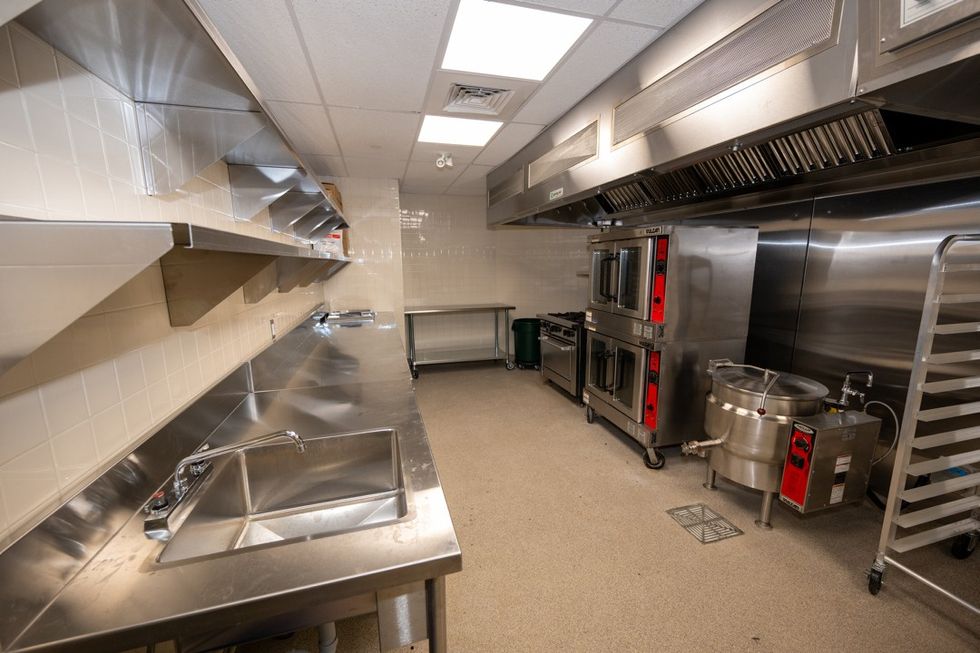A new homeless shelter recently opened in my neighbourhood, operated by St. Felix Centre. By definition, I am the one who is “supposed” to object — the neighbour who falls into the familiar NIMBY category. Instead, I want to explain why I support this project, and why it has the ingredients not only to succeed but to become a model for other shelters.
When Adaptive Reuse Meets Urgent Need
The shelter was created by renovating an existing building, rather than constructing a new one. This distinction is critical. New builds are often more difficult for communities to accept because they visibly alter the physical status quo of the neighbourhood. By repurposing an existing building, the change is primarily in use, not in built form. This reduces disruption while still addressing urgent need.
One of the most thoughtful aspects of this shelter is how little it alters the immediate outdoors. Waste management takes place entirely inside the building, preventing the kinds of clutter or overflow that often fuel neighbourhood concern. The outdoor patio is enclosed with a high railing, creating a secure and discreet space for residents without impacting the public realm. From the sidewalk, you would not even know the building is a shelter — quietly fulfilling its role without drawing negative attention.
Meeting Urgent Needs with Dignity
Site photo of the two-bed pods at the new 629 Adelaide St. W shelter
The shelter provides accommodations in pods with two people per pod. This is not the long-term housing solution we ultimately need, nor is it a substitute for supportive or transitional housing. But it represents an immediate, humane response. Residents can live with dignity in a setting that is safer, warmer, and more stable than the alternatives.
When the Crisis Doubles Overnight
According to the City of Toronto, Homelessness in Toronto has doubled since the COVID-19 pandemic, rising from roughly 7,300 people in 2021 to more than 15,000 in 2024. These numbers underline the urgency of expanding capacity in every available form —whether permanent housing, supportive housing, or emergency shelters. Waiting for perfect solutions risks leaving thousands with nothing.
St. Felix’s operations include wrap-around supports — mental health services, harm reduction, meals, and recreation — designed to help residents stabilize and plan for permanent housing. This approach reduces risks for the neighbourhood and increases the chances of long-term success for residents.
 Site photo of the kitchen at the new 629 Adelaide St. W shelter
Site photo of the kitchen at the new 629 Adelaide St. W shelter
Emergency shelters are often seen as a stopgap, but their impact extends beyond providing a bed. By connecting residents to healthcare, employment services, and case management, shelters can act as stabilizing anchors. The goal is not only to keep people safe in the short term but to put them on a pathway to permanent housing. Without this bridge, people can become stuck in cycles of instability that are far harder to break later.
Concerns about safety often dominate local opposition to shelters. Yet research consistently shows that shelters operated with wrap-around supports are safer for both residents and surrounding communities than unmanaged street homelessness. By providing structure, supervision, and services, shelters reduce the risks that come with people being forced to survive outdoors. Integration, rather than exclusion, is what truly improves safety.
A Shared Neighbourhood Responsibility
It is easy to default to resisting local shelters. Yet homelessness is not an abstract issue — it is on our streets every day, and shifting responsibility to “somewhere else” does not solve it. What this project demonstrates is that with adaptive reuse, thoughtful design, and a credible operator, a shelter can integrate into a community while providing desperately needed support. I may be the neighbour expected to say “not here,” but instead I see a model that is pragmatic, dignified, and urgently necessary. For that reason, I stand behind it.
”Restoring an individuals’ sense of hope and showing them that they have value as a human being by welcoming them into a neighbourhood is one of the most impactful elements to ensuring someone can have a successful outcome as they navigate the shelter system,” says Brian Harris, the Executive Director of the St. Felix Centre.
When the shelter was first proposed, many of my neighbours raised strong objections, some even knocked on my front door hoping for us to join them. I understood their concerns, but walking past the building, you won’t even be able to notice its use. “We’re grateful that the vast majority of residents living near the new shelter have shown us and our guests warmth and compassion and we do hope that what we’ve achieved here can inspire future projects the City supports to address the housing and homelessness crisis,” says Harris.
From the outside, there are no visible signs that it is a shelter. Life on the street has not changed in the disruptive way some feared. What has changed is that people inside now have a safer, more dignified place to be.
